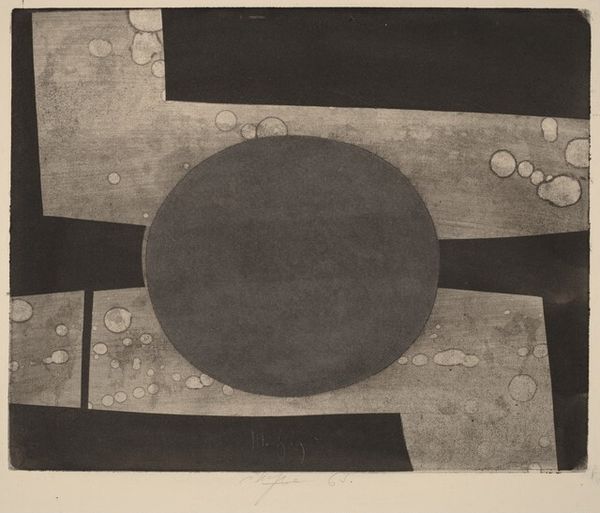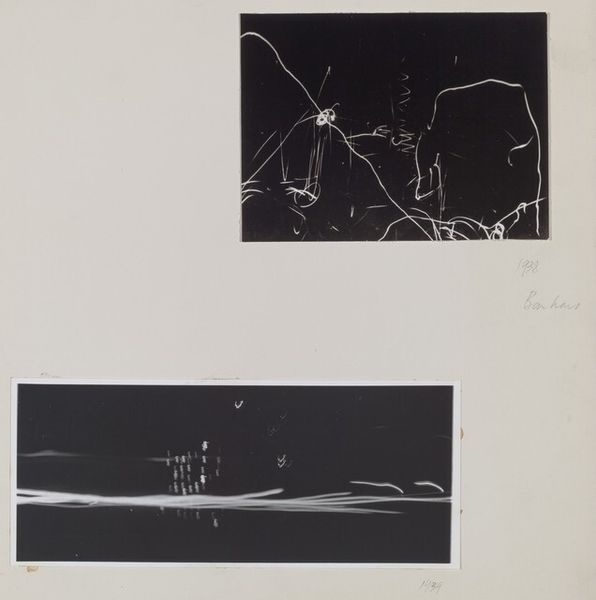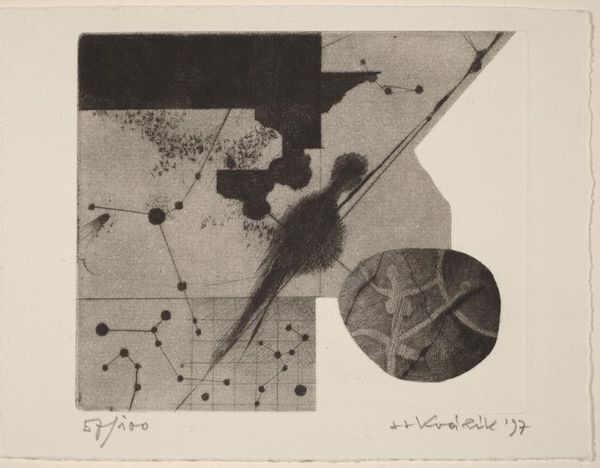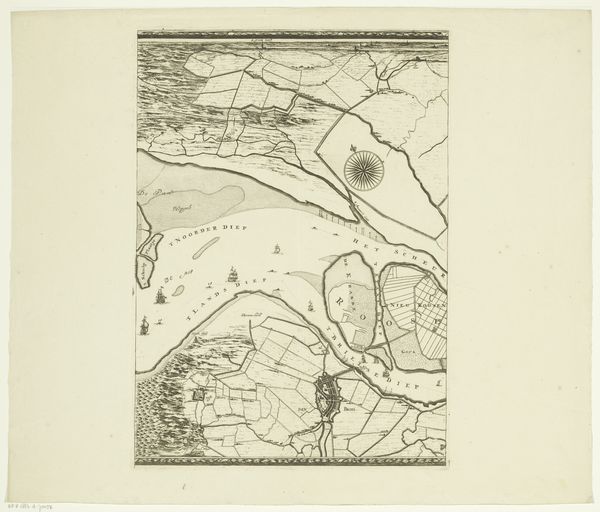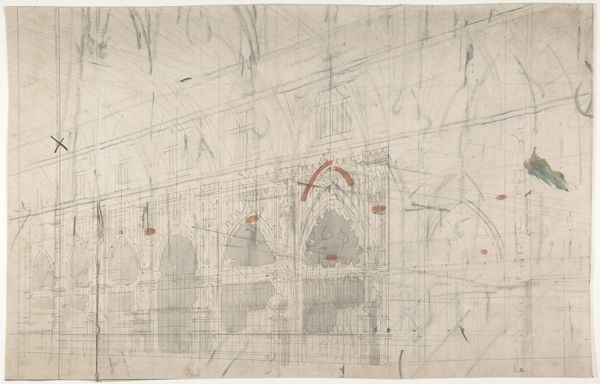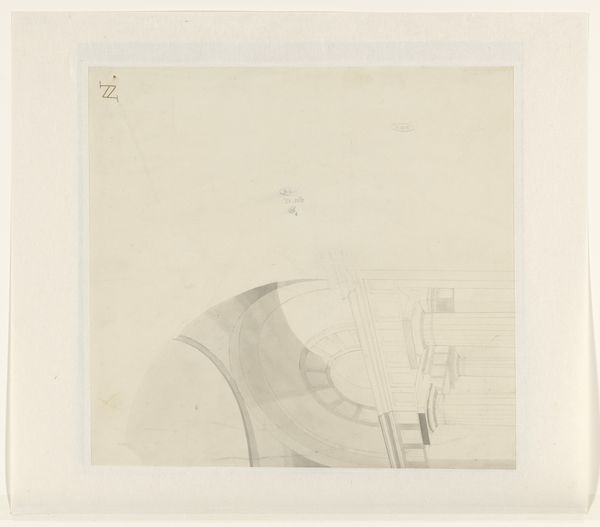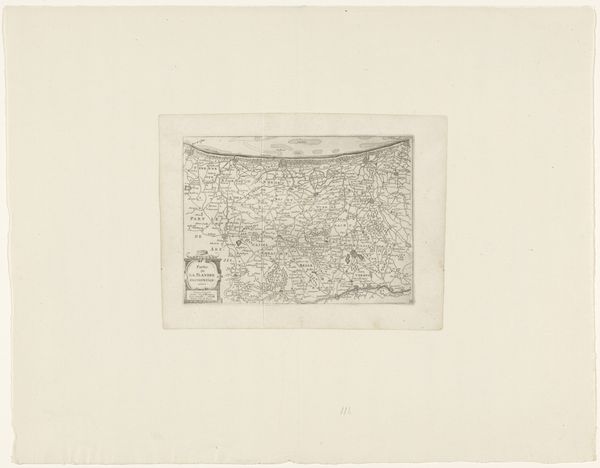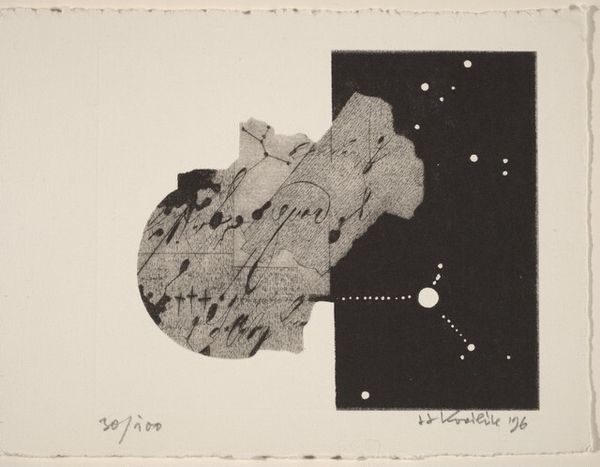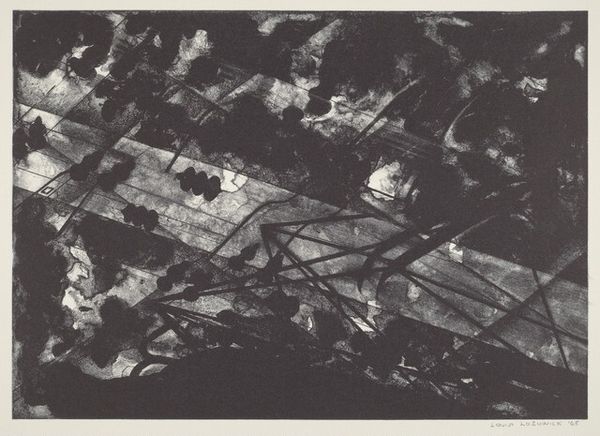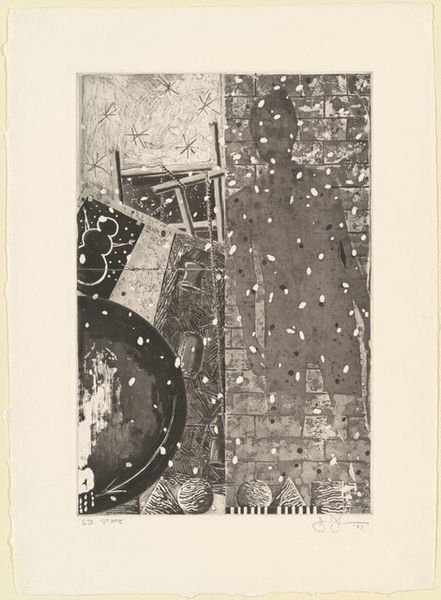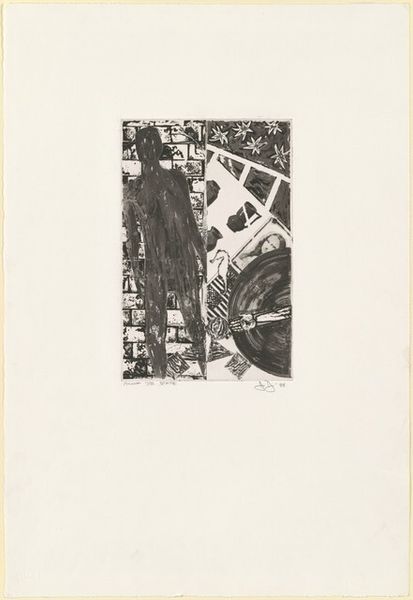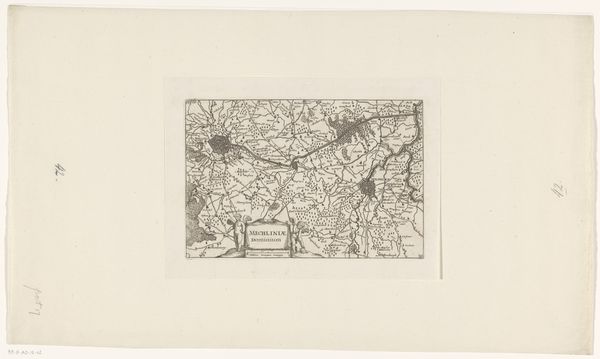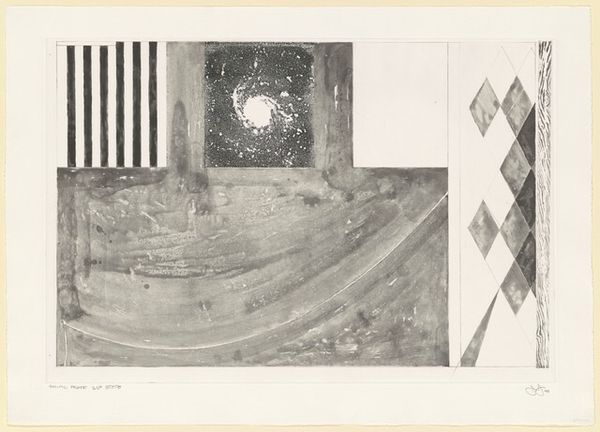
graphic-art, print, etching, paper
#
graphic-art
# print
#
etching
#
paper
#
abstraction
#
watercolor
#
monochrome
Dimensions: sheet (open): 14.6 x 42.1 cm (5 3/4 x 16 9/16 in.) sheet (closed): 14.6 x 21 cm (5 3/4 x 8 1/4 in.)
Copyright: National Gallery of Art: CC0 1.0
Curator: Jaroslav Králík's "New Year's Print, '96," created in 1995, is a study in monochrome etching on paper. What are your initial impressions? Editor: It feels almost like a dark prophecy, this contrast of black and white, the symbolic weight presses down. Is that a lunar eclipse at the top? The celestial above looms over something that feels quite earthly, maybe even sinister. Curator: As an etching, the material reality interests me. Consider the artist's process. To achieve this level of detail, there must have been multiple acid baths, carefully controlled to eat away at the metal plate, and of course paper making itself. Each impression bears witness to a complex chain of production and manual labor. Editor: The layering of images and symbols adds a lot, even beyond just the technique of printmaking. Is there writing visible at the bottom? It looks obscured. Is this some private system, or a symbolic attempt at revealing knowledge? I definitely detect an archetypal feminine energy to the top portion and darker phallic symbols pointing up from the ground, connecting earth with sky, in the field below. Curator: Look closer and you see the etcher’s deliberate process. Each line had to be incised, bitten by acid. What does it tell us about craft versus industry here? This isn't mass production, but a deliberate hand creating something meant for distribution in multiples. The tension between singular act and mass availability is the core meaning here. Editor: I think this piece could be read as an effort to represent the anxieties about time's passage and an impending new year. I see a yearning for knowledge and connection, all while struggling against this opaque background that threatens to swallow everything whole. What did this time signify for Kralik? And how can we bring meaning forward for ourselves by analyzing recurring figures and forms? Curator: Indeed. The use of graphic art and paper itself evokes a long history of distribution, mass culture and printed medium with the intent of being looked at in our current technological era. A fascinating material and process that asks about temporality and endurance, considering what the symbols may foretell. Editor: Ultimately, “New Year’s Print, ‘96” prompts reflections about endings, new beginnings, the cultural symbols and material realities that bind us to history, and to each other.
Comments
No comments
Be the first to comment and join the conversation on the ultimate creative platform.
